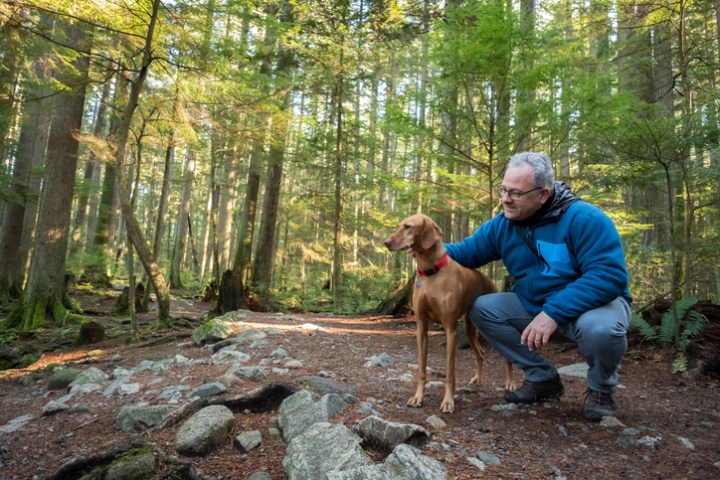How to fill quiet time with calming activities

If we want to make more time for silence, we have to recognise that continually checking our devices prevents us from welcoming silence into our lives. Without really thinking about it, when we needlessly check our social media feed we are rejecting silence.
That also means rejecting the benefits that silence can bring – the opportunity to relax, moments for appreciation, and time to take stock, find balance and renew ourselves. So how do we go about weaning ourselves off our devices? One way is to be very strict with ourselves about not continually checking and sending messages. Another way is to make an effort to fill our time with more wholesome, calming activities.
Of course, I’m not advocating that you suddenly sign up for a zillion activities and cram your timetable unrealistically full. However, I do suggest that you should try to make wholesome, healthy choices from time to time when you are deciding what to do. So, for example, instead of trawling through shopping sites for the next purchase, put that on hold and choose an activity that will nourish you.
Spending Time in Nature
Natural areas are really good places to start cultivating the essence of silence. By spending time in nature we are creating space away from all the demands of modern life: we are literally squeezing the stimulation out of the timetable. By practising relaxation we are also strengthening that inner place of silence. That’s why we continue to feel relaxed when we return to work after a walk in a park – at least for a spell, anyway. Although we may dream of relaxing on a beach on a desert island or on a lazy river bank, perhaps we don’t need to look that far. It could be that the importance we attach to exotic destinations or rural retreats is in fact an excuse to avoid looking for nature and solitude nearby.
EXERCISE
A neighbouring tree
Wherever you are right now, take a moment to look around you and consider: where is the nearest tree? When you can, go to visit the tree. If it is in a space that is inaccessible to you, for example in a neighbour’s garden, choose another tree that you can reach. Get to know the tree.
Place your hand on the bark and feel the texture under your fingers. Is it smooth or rough? Smell the bark. Do any particles come away in your fingers? What about the branches? How are they shaped? Are they thick or thin, or strong or spindly? Can you see marks of pruning or other damage on the tree? Is it in leaf? What are the leaves like (or the lack of leaves, if there are none). Are the leaves newly opened, or coming to the end of their lifespan? What colours can you find in the leaves? Gently finger the leaves near your ear – how do they sound?
As you stand next to the tree, breathe. Consider how oxygen and carbon dioxide are exchanged between you. Look at the ground. Notice how the roots of the tree enter the earth and bind the tree in place, holding it steady and still, and also sustaining it. Consider how eventually all parts of our bodies pass into the earth – hair and skin cells that we constantly shed during our lives, and eventually the rest of our bodies after we die.
Nourishing Pastimes
Going out into nature is not the only way to bring more silence into our lives. Other activities may benefit us just as well or more. Different people find fulfilment in different ways, but it is often the case that an activity which involves quiet, focused attention can bring us a lot of satisfaction. Some people particularly enjoy activities such as crafts and playing musical instruments, which also involve handiwork and combine elements of both skill and creativity.
Hobbies such as knitting, woodwork, painting, baking and gardening can be wonderful for making time for quiet, calm activity. By directing our attention to these pursuits, we are earmarking time for quiet concentration. If you have a busy family life, you may not have much time to devote to your favourite activities. However, you can bring this element of quiet calm into other activities. In fact, the activities do not have to be technically ‘quiet’ in order for you to bring in the essence of silence. Perhaps you can join your children in a rather boisterous game of stuck in the mud. It may not be quiet, yet by joining in wholeheartedly, without your mind half on other tasks, you may capture something of the spirit of simplicity and silence.
Other people find that sport (see also page 61) provides the way to renewing their spirit. Sport involves the element of focus and also some degree of challenge. Some sports are certainly not calm and quiet, but because we may become fully absorbed in them, they still have the effect of quieting and refreshing our minds.
All of these activities have in common the fact that we become absorbed in them. While we are doing them, we forget ourselves and other distractions; our minds become focused and alert. Some people refer to this as a state of ‘flow’. Activities that present a certain amount of challenge and require us to hone a skill to meet that challenge are the most likely to keep us engaged. Although this is perhaps not silence in the strictest sense, by keeping our minds on just one wholesome activity, we are preventing ourselves from being drawn into a series of other competing noisy tasks and thoughts.
Discover the art of silence
In our day-to-day lives, most of us are absolutely bombarded by sound and visual stimuli. We lurch from one activity to the next feeling stressed and overwhelmed. Messages from media, advertising and popular culture tell us that having more will help us find happiness, yet instead we feel overloaded and burnt out.
The Art of Silence offers us an antidote.
It explores how we can use silence as a strategy for living well; a guiding principle to help us reign in our chaotic lifestyles and redress the balance of this crazy, noisy world that we live in. It can give us the space we need to allow our bodies and minds to relax and become the healthy, wholesome individuals we want to be.
The Art of Silence explores three ways that we can harness the power of silence and bring more of it into our lives. It considers how we can take practical steps to quiet our environments and timetables; how we can cultivate peaceful relationships; and how we can work with the mind to nurture an inner peace, regardless of the circumstances.








